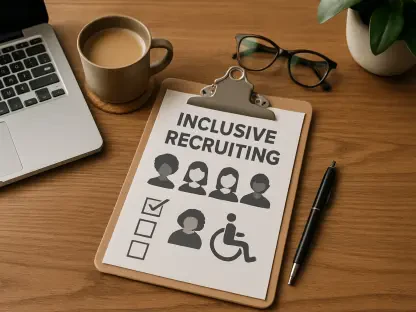As we dive into the complex world of labor relations and unionization, I’m thrilled to sit down with Sofia Khaira, a renowned specialist in diversity, equity, and inclusion. With her extensive experience in HR and a passion for fostering equitable workplaces, Sofia brings a unique perspective on why employees seek to unionize and how employers can navigate these dynamics. Today, we’ll explore the driving forces behind unionization, the disconnect between employer perceptions and employee sentiments, and the evolving legislative landscape shaping labor relations.
What are some of the key reasons, beyond just salary, that push employees to join unions, based on recent insights?
I think it’s crucial to recognize that employees are often looking for more than just a paycheck. Recent surveys, like those from Littler, highlight that workers want better work/life balance, a stronger voice in business decisions, and greater job security. These factors reflect a deeper need for respect and stability in the workplace. When employees feel like their personal lives are unsupported or they’re at constant risk of losing their jobs, they turn to unions as a way to advocate for those fundamental needs.
How significant is the desire for work/life balance in motivating employees to unionize?
It’s incredibly significant. Many employees today are juggling multiple responsibilities—family, personal growth, and work—and they’re looking for employers who understand that. When companies fail to offer flexibility or support, like reasonable hours or remote work options, employees feel undervalued. Unionizing becomes a way to collectively demand policies that allow them to thrive both at work and at home. It’s not just a perk; it’s about creating a sustainable way to live and work.
Why do you think employees are increasingly seeking more input into business decisions, and how does this tie into unionization?
Employees want to feel like they matter, that their insights and experiences on the ground level are valued. Often, decisions made at the top don’t reflect the realities workers face daily. When they’re excluded from these conversations, frustration builds. Unionization offers a structured way to demand a seat at the table, ensuring their voices influence policies and practices that directly affect them. It’s about empowerment and being part of the bigger picture.
Can you elaborate on how job security influences an employee’s decision to organize into a union?
Absolutely. Job security is a cornerstone of why people unionize. In uncertain economic times, or when layoffs seem arbitrary, the fear of losing a livelihood is real. Unions provide a safety net through collective bargaining agreements that can protect against sudden terminations or unfair treatment. Employees see unions as a shield, giving them confidence that their jobs won’t disappear overnight without a fight or fair process.
Why do you think many employers underestimate how many of their workers might be open to joining a union?
There’s often a disconnect in communication and perception. Employers might assume that because they haven’t heard direct complaints, everything is fine. But silence doesn’t mean satisfaction. Many workers hesitate to voice concerns individually due to fear of retaliation. Employers may also rely on outdated assumptions about unions, thinking they’re only for certain industries or demographics, missing the broader appeal unions have today across diverse workforces.
How wide do you believe the gap is between employer perceptions and employee feelings about unionization?
I’d say it’s quite substantial in many cases. Employers might believe only a small fraction of their workforce would consider unionizing, but data suggests otherwise. Employees often feel unheard or undervalued in ways that aren’t immediately visible to leadership. This gap grows when there’s no mechanism for honest dialogue. Without regular feedback or trust, employers can be completely unaware of the undercurrent of discontent that drives union interest.
What are the potential consequences for employers who misjudge their employees’ interest in unionizing?
The risks are significant. If employers underestimate this interest, they might be caught off guard by organizing efforts, leading to tense conflicts or legal challenges with bodies like the National Labor Relations Board. It can damage trust, hurt morale, and even result in costly disputes or penalties. Beyond that, it signals a missed opportunity to address underlying issues proactively, which could have strengthened workplace relationships instead of fracturing them.
What are some common pitfalls employers fall into when navigating the collective bargaining process during unionization efforts?
One major pitfall is approaching bargaining with a combative mindset rather than a collaborative one. Some employers resist or delay negotiations, which can escalate tensions. Others fail to communicate transparently with employees, leading to mistrust. There’s also a tendency to overlook legal obligations under labor laws, which can land them in hot water. It’s often a lack of preparation or understanding of the process that trips them up.
How can employers better handle unionization to avoid legal or relational conflicts?
Employers need to prioritize open communication and respect for the process. That means listening to employee concerns before unionization even starts, training managers on labor laws, and approaching negotiations in good faith. Building a culture where workers feel valued can reduce the drive to unionize in the first place. If it does happen, being proactive, transparent, and willing to find common ground can prevent legal missteps and preserve workplace harmony.
What trends are you seeing in union membership, and why might interest persist even if numbers are declining?
Union membership has seen a dip recently, often due to shifts in industries and economic structures, like the rise of gig work where traditional unions are less present. However, interest remains strong because workers still face core issues—unfair treatment, lack of security, and insufficient benefits. Social media and grassroots movements also keep the conversation alive, inspiring younger generations to see unions as a tool for change, even if formal membership hasn’t caught up yet.
Can you shed light on what ‘captive audience’ meetings are and why some states are moving to restrict them?
Captive audience meetings are sessions where employers require workers to attend presentations, often during work hours, to hear anti-union messages. Some states are pushing to limit or ban these because they’re seen as coercive—employees might feel pressured or unable to opt out without repercussions. The concern is that these meetings undermine free choice in union decisions, tilting the balance unfairly toward the employer’s perspective.
What is your forecast for the future of labor relations, especially with legislative proposals like the Faster Labor Contracts Act on the horizon?
I believe we’re at a turning point. Legislation like the Faster Labor Contracts Act, which aims to expedite bargaining and potentially involve outside parties in agreements, could reshape how quickly and fairly negotiations happen. However, with strong business opposition, its impact remains uncertain. Overall, I expect labor relations to become more dynamic, with a push for greater worker protections balanced against employer concerns. Companies that adapt by prioritizing engagement and fairness will likely fare better in this evolving landscape.









